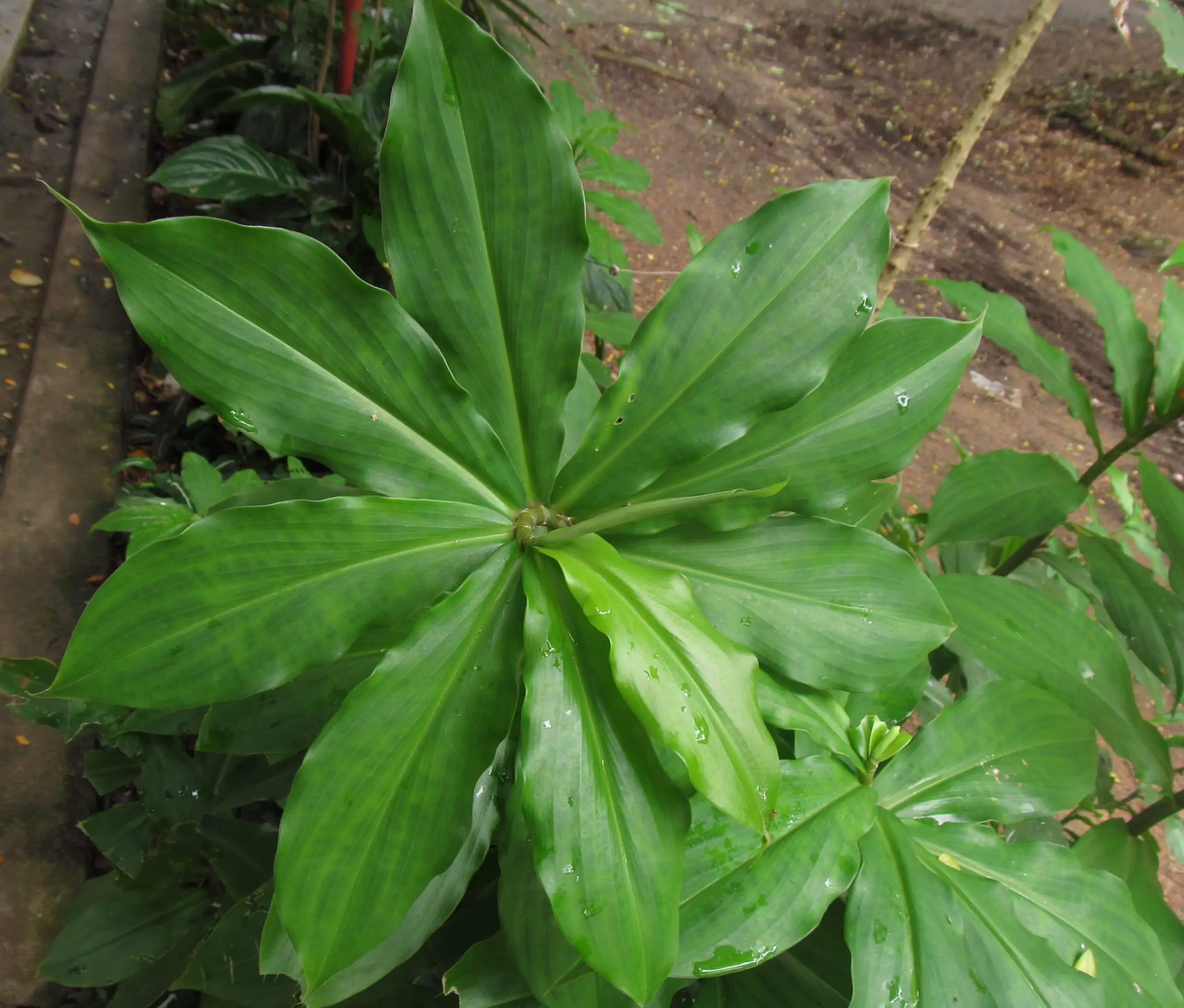
Image – Wikimedia / Navaneeth Krishnan S
There are many plants that can be of great help to us to have better health or simply to be able to have a good quality of life. Two of them are known as insulin plantand they are very interesting.
In addition, they are not very difficult to care for since it is the perfect size to be grown in a pot. Do we know them?
Origin and characteristics of insulin plants
As there are two plants that are known as vegetable insulins, the two are very different, so we are going to treat them a little separately so that you know well what one is and what the other is like:
Chamacostus spat

Image – Wikimedia / CT Johansson
It is a fleshy plant native to eastern Brazil whose scientific name is Chamacostus spatalthough it is known more as insulin plant, Fiery Costus or Spiral Flag. It is native to eastern Brazil. It grows to a height of 70 centimeters, and its leaves are arranged in a spiral. These are simple, whole, green in color. The flowers are orange and measure about 2 centimeters.
circling exit

Image – Wikimedia / João Medeiros
It is an evergreen climber native from Florida to Bolivia, Paraguay and the Antilles. It can grow to a height of 6-10 meters thanks to its development of tendrils. The stems are flexible, and from them sprout oblong to ovate, or heart-shaped leaves. The flowers are grouped in branched and cymose inflorescences, greenish-yellow, whitish or purple. The berries are subglobose or obovoid, and black.
As you may have guessed, its medicinal properties are very good for those whose bodies do not produce insulin. And it is that you only have to take some leaves and infuse them after consulting with a doctor. But how do you have these healthy plants?
What are your insulin care?
If you dare to get a copy of the insulin plant, we recommend that you provide it with the following care:
Weather
Before acquiring a plant or seeds, it is important that we know in advance if it can live well (and not survive) in our climate. This is basic, but the truth is that … who has not bought one simply because it was beautiful?
I admit that not once, but a few times. There has not always been luck; in fact, most of those unstudied acquisitions ended up dying in winter. So if you don’t want to lose money, you have to know that the insulin plant is tropicalof jungle and warm forest, so it is very, very sensitive to cold.
Location

Image – Wikimedia / Krzysztof Ziarnek, Kenraiz
- Outdoor: the ideal is to have it whenever possible outside the home, in a corner protected from direct sun.
- Interior: it must be in a bright room, away from drafts, and with high humidity (if the environment in your house is very dry, you can buy a humidifier or put containers with water near it).
Earth
- Flower pot: universal growing medium (for sale here!) mixed with 30% perlite. It is even very interesting to add a first layer of arlite, volcanic clay or similar (it can be fine gravel, 1-3mm thick).
- the garden: the land must be fertile, with good drainage. It is also important that it is loose, that is, that it does not have a tendency to compact, if it is not, make a hole of about 50 x 50cm and fill it with the substrate mentioned above.
Irrigation
Irrigation must be frequent. In general they have to be watered 3-4 times a week in summer and somewhat less the rest of the year.
But yes, you have to avoid waterlogging, which is why, if you want to have a pot, you have to choose one that has drainage holes; and if it is to be grown in the garden, the soil must be able to absorb and filter the water as quickly as possible.
Subscriber
From early spring to late summer with ecological fertilizers once a month.
Multiplication
Insulin plants They multiply by seeds and cuttings in spring. Let’s know how:
Seeds
- First the seedbed is filled with specific soil (for sale here!.
- Then, it is watered consciously.
- Then, 2-3 seeds are placed in each alveolus / seedbed, burying them a little, enough so that they are not exposed.
- Finally, the seedbed is placed outside, in semi-shade.
If all goes well, they will germinate in about 10 days.
Cuttings
It is the easiest and fastest way to get new copies. You only have to cut a stem, impregnate the base with homemade rooting agents, and then plant it in a pot with vermiculite previously moistened with water.
After about 15 days it will emit its roots.
Pruning
They don’t need it. But you can remove the dry leaves and wilted flowers whenever necessary, as well as those stems that are growing too much in late winter or early spring.
Rusticity
They do not resist cold or frost. If the temperature drops below 10ºC, they should be protected in a heated greenhouse or indoors.
What uses is given to the insulin plant?

Image – Wikimedia Commons / Forest & Kim Starr
It is used for several things:
As an ornamental plant
And they are very decorative. Whether it is the flowering season or if at the moment they only have leaves, they are very elegantideal for growing in sheltered corners of the garden, on shady balconies, on terraces or small patios …
They adapt wonderfully well to living in pots, so you won’t have to worry about the space you have available 😉.
As a medicinal plant. Medicinal properties of the insulin plant
What did you think of the insulin plant? Did you know her?

